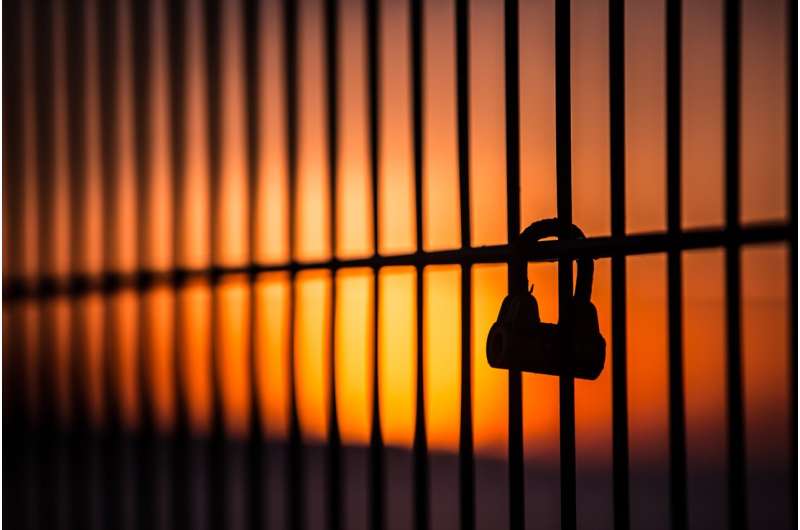Locking up kids has serious mental health impacts and contributes to further reoffending

Note: This article contains information on violence experienced by First Nations young people in the Australian carceral system. There are mentions of racist terms, and this piece also mentions self harm, trauma and suicide.
The ABC Four Corners report "" detailed the horrific conditions for young Aboriginal people in the juvenile justice system in Western Australia.
The report was nothing new. In 2016, detailed the brutalization of Aboriginal people in the Northern Territory's Don Dale Youth Detention Centre, in its episode "Australia's Shame." Also in 2016, detailed the abuse children were receiving in Queensland's juvenile detention facilities.
Children should be playing, swimming, running and exploring life. They do not belong behind bars. Yet, on any given day in 2020-21, an average of young people were incarcerated in Australia. Most of the young people incarcerated are Aboriginal and Torres Strait Islander.
Despite Aboriginal and Torres Strait Islander young people in WA making up just of the population, they account for of youth locked up in Perth's Banksia Hill Juvenile Detention Centre.
so many Aboriginal and Torres Strait Islander peoples are detained are linked to the impacts of colonization, such as intergenerational trauma, ongoing racism, discrimination, and unresolved issues related to self-determination.
The Four Corners documentary alleged children in detention were exposed to abuse, torture, solitary confinement and other degrading treatment such as "folding," which involves bending a person's legs behind them before sitting on them—we saw a grown man sitting on a child's legs in this way in the documentary.
The documentary also found Aboriginal young people were more likely to be held in solitary confinement, leading to the young people feeling helpless. Racism was also used as a form of abuse, with security calling the young detainees apes and monkeys. One of the young men detained at Banksia Hill expressed the treatment he received made him consider taking his own life.
How does incarceration impact young people's mental health?
Many young people enter youth detention with pre-existing neurocognitive impairments (such as fetal alcohol spectrum disorder), trauma, and poor mental health. More than of Aboriginal and Torres Strait Islander young people in a Queensland detention center reported mental health problems.
Data from the Australian Institute of Health and Welfare revealed that more than of young people in detention were survivors of abuse or neglect. Rather than supporting the most vulnerable within our community, the Australian justice system is and often developmentally compromised young people.
has shown pre-existing mental health problems are likely exacerbated by experiences during incarceration, such as isolation, boredom and victimization.
This inhumane treatment brings about retraumatization of the effects of colonization and racism, with feelings of , worthlessness and .
Youth detention is also associated with an of suicide, psychiatric disorders, and drug and alcohol abuse.
Locking young people up during their of development also has long-term impacts. These include poor emotional development, poor education outcomes, and worse mental health . As adults, post-release Aboriginal and Torres Strait Islander peoples are more likely to die than the general population, with suicide the leading cause of death.
You don't have to look far to see the devastating impacts of incarceration on mental health. Just last year, there were of self-harm at Banksia Hill, WA's only youth detention center.
Locking up kids increases the likelihood of reoffending
Imprisoning young offenders is also associated with future and .
Without proper rehabilitation and support post-release, Aboriginal and Torres Strait Islander young peoples often return to the same conditions that created the patterns of offending in the first place.
Earlier this year, the head of Perth Children's Court, Judge Hylton Quail the treatment of a young person in detention at Banksia Hill, stating:
"When you treat a damaged child like an animal, they will behave like an animal […] When you want to make a monster, this is how you do it."
What needs to be done?
There needs to be substantive change in how young people who come in contact with the justice system are treated. We need governments to commit, under , to whole-of-system change through:
-
recognizing children should not be criminalized at ten years old. The campaign is calling for the minimum age of responsibility to be raised to 14. Early prevention and intervention are necessary here. Children who are at risk of offending should be appropriately supported, to reduce pathways to offending.
-
an approach addressing why young Aboriginal and Torres Strait Islander peoples are locked up in such great numbers is required, driven by respective First Nations communities. This means investing in housing, health, education, transport and other essential services and crucial aspects of a person's life. An example of this is found in a pilot program in New South Wales called , which tackled the social determinants of incarceration using a community approach.
-
future solutions must be trauma-informed and led by Aboriginal and Torres Strait Islander peoples.
Aboriginal and Torres Strait Islander children are not born criminals. They are born into systems that fail them, in a country that all too often turns a blind eye before locking them up.
The Australian government needs to work with First Nations communities to ensure the safety and well-being of all Aboriginal and Torres Strait Islander peoples, including our future generations.
Provided by The Conversation
This article is republished from under a Creative Commons license. Read the .![]()
















